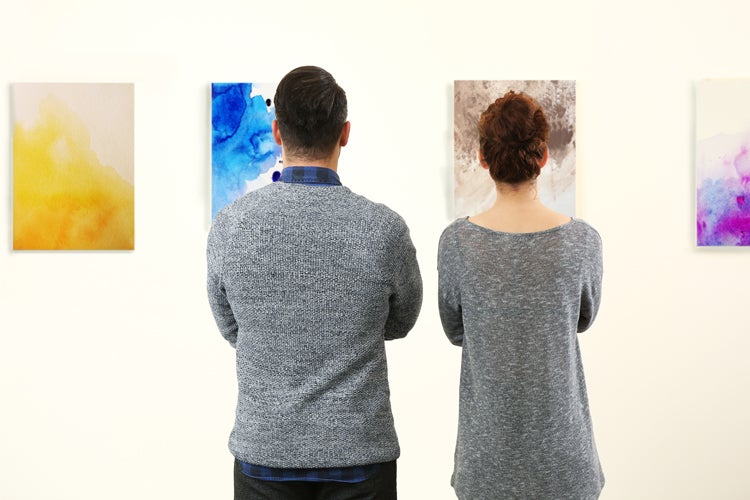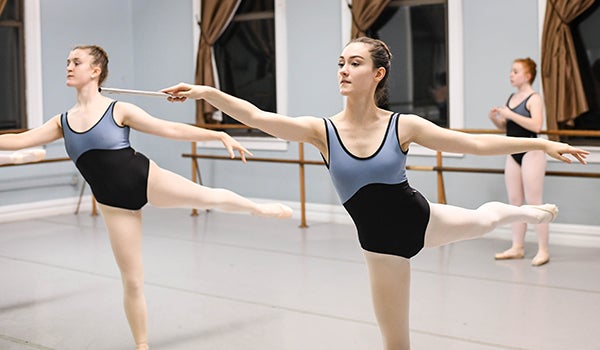If you think starting an art collection sounds like something reserved only for the Mr. and Mrs. Thirstin Howl III’s of the world, you’re not alone.
If you aren’t a seasoned collector, purchasing art can seem intimidating. You’re probably asking yourself a slew of questions like: “Where do I start? How do I learn about what’s available? What is a wise investment?” All these questions are enough to make many people give up and simply go with some mass-produced print from a big-box store; you know, the same picture you see in everyone else’s house.
However, there is no reason that the walls of every home cannot boast original artwork, regardless of budget or style. It has been said people buy art for two reasons: emotional connection and investment. What if you could do both at the same time?
By educating yourself first, starting an art collection is a lot less complicated than most people think.
First things first, determine the style of art you love. This will help steer you in the right direction when looking to purchase. What do you respond to? When you look at a piece, does it evoke certain emotions? Many people go to museums or read catalogues to admire pieces that often come with high price tags.
Even if you can’t afford a Monet, knowing that you like his style of painting may encourage you to try to find lesser-known and less expensive artists who work in the same style.
Attending local art shows or exhibitions at universities is an ideal way to find talented artists whose work is more likely to be in your budget. Familiarizing yourself with up-and-coming young artists is also a smart way to make good investments in art. If you purchase from them early on in their career, as these prodigies develop, chances are the value of their works will increase as well.
It is easy to be intimidated when trying to select pieces for your personal collection. You may not know if the cost of a piece is based on market value or if it is simply inflated by the artist/broker.
That is why slowly immersing yourself in the art world — and enjoying the process — is key. Unless you’re hiring a trusted art advisor, trying to learn everything about art in a short period of time would be like attempting to verse yourself in the stock market overnight.
Developing your sense of style, learning about different types of art (painting, photography, sculpture), and talking to other collectors are all sensible things to do when first setting out to collect.
Ultimately, it is about finding pieces that you connect to, but you don’t want to squander money on less than ideal investments simply because you didn’t know any better. Like anything, the more exposure you have to art, the more you will recognize distinctions between styles, artists and quality.
Whether your budget is large or small, going to galleries and talking to gallerists is invaluable. Most are in the business because they really love it, and thus love talking about art. By asking questions and listening to gallerists’ answers, you will not only learn about the art and artists you like, but you will become familiar with the process of buying art and how to display it in your home.
Be up front with gallerists and tell them you want to learn and ask about budget questions. Money is not a taboo subject. In fact, you would be surprised the price points that are out there, and gallerists are a resource to help find pieces that will work for you. Do not devalue a piece just because it is not expensive.
The goal is to amass a collection over time of pieces that speak to you. That is why forming a trusted relationship with a gallerist who represents art you like is important.
If you simply want to dip your toe in, so to speak, the internet has become a source for many would-be collectors. There are many websites that sell pieces, framed and ready to hang, for $50 to $1,000 each. They often will have artist biographies or short videos of the artist explaining their process and inspiration.
It is a great way to familiarize yourself with pieces from the comfort of your own home.
When first starting your collection, it is advisable to keep the cost-per-piece low. Your taste is going to evolve and you don’t want to blow your entire budget on one piece.
That being said, if you love it, and you can afford it, buy it.
Andrew Skipper, of South Bend, is a lifestyle expert working as a creative consultant in America and Europe. His company, Andrew Skipper Everyday, focuses on helping people elevate the everyday tasks they perform and the objects they live with. He is a featured lifestyle expert on television both locally in South Bend, and nationally for Gray Television. He is also a freelance writer focusing on the subjects of interior design, entertaining and travel. Andrew enjoys his role as an interior decorating consultant for residential and commercial projects. For more information, check out AndrewSkipper.com.





